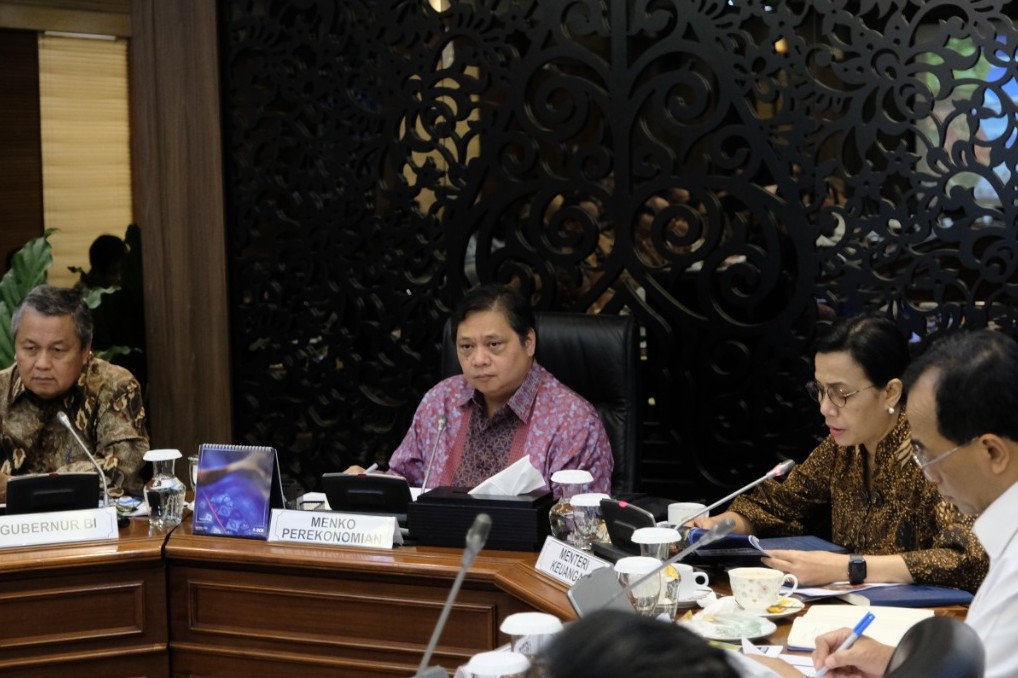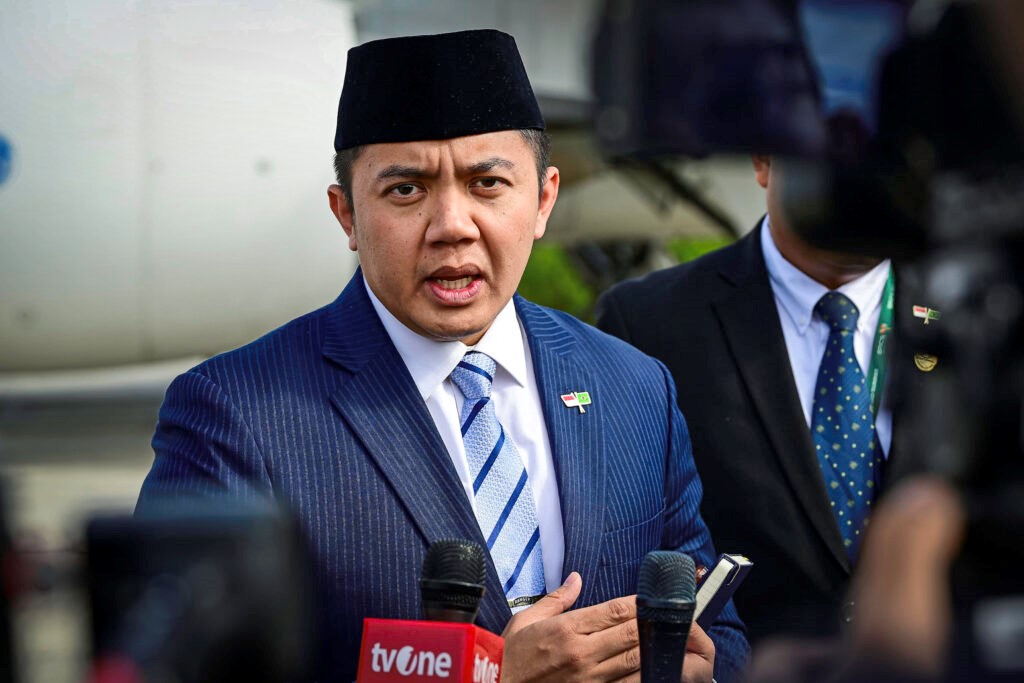Gov’t and BI to Control Inflation Through Four Strategic Steps

Cabinet ministers and Governor of BI attends the inflation control meeting at the Office of Coordinating Ministry for Economic Affairs, Jakarta, Thursday (13/4). (Photo by: Coordinating Ministry for Economic Affairs)
Indonesian Government and Bank Indonesia (BI) managed to keep inflation in the Consumer Price Index (CPI) 2019 low under control at 2.72% year on year (yoy) and within the target range of 3.5 ± 1% through the synergy of policies.
“This achievement is the lowest in the last two decades and (at the same time) continues the trend of maintaining the realization of inflation in the target range for the last five years,” Coordinating Minister for Economic Affairs Airlangga Hartarto said at the High-Level Meeting of the Central Inflation Control Team (HLM TPIP) 2020, Thursday (13/2), in his office, Jakarta.
The achievement in maintaining inflation in 2019 by 2.72% (yoy), Airlangga stated, was contributed by a decrease in core inflation (3.02% yoy) and minimal administered prices (AP) inflation (0.51% yoy), while volatile food (VF) inflation increased by 4.30% (yoy) but it still maintained below 5% according to the 2019 HLM TPIP agreement.
Inflation which continues to decline and is controlled within the target is influenced by the increasingly anchored inflation expectations and the maintained exchange rate stability. These are all the results of strengthening policy coordination between the Government and BI, both at central and regional levels.
Infrastructure development continues to be optimized so that it gives a positive impact on improvement of connectivity and the smooth distribution of goods and services. Low and stable inflation has supported the momentum of economic growth, amidst the slow-down of global economic growth.
“This matter makes a positive contribution in maintaining people’s purchasing power, providing incentives for investment including investment, and increasing economic competitiveness,” Airlangga explained.
In the future, the Government and BI, both at central and regional levels, are committed to strengthening their synergy in maintaining price stability. The objective is to keep CPI inflation maintained within the target range of 3.0 ± 1% by 2020. Low and stable inflation is expected to support strong and sustainable economic growth towards onward Indonesia.
In line with this commitment, the HLM TPIP agreed on four strategic steps to control inflation. The four strategic steps are as follows:
- Maintaining volatile food inflation in the range of 4.0 ± 1%, through efforts to:
-
- Strengthening the four pillars of strategy which includes Price Affordability, Supply Availability, Smooth Distribution, and Effective Communication (4K), in line with the 2019-2021 Inflation Control Roadmap. Implementation of the strategy is focused on reducing price disparity between time zones and between regions;
- Maintaining supply and smooth distribution, especially ahead of the National Religious Holidays (HBKN); and
- Strengthening agricultural institutions, accompanied by capacity building, financing, and development of digital agricultural ecosystems.
- Increasing the effectiveness of social protection programs and the distribution of targeted subsidies in order to maintain the people’s purchasing power.
- Strengthening communication synergies to support the management of public expectations; and
- Strengthening the coordination of Central and Regional Governments in controlling inflation through the National Coordination Meeting on Inflation Control in June 2020 with the theme “Price Stability Towards Onward Indonesia: Synergy to Increase Food Availability through Corporationization and Digitalization of MSMEs”. (Coordinating Ministry for Economic Affairs PR/EN)
Translated by: Fairuzzamani Inayatillah
Reviewed by: Mia M. Bonaedy








